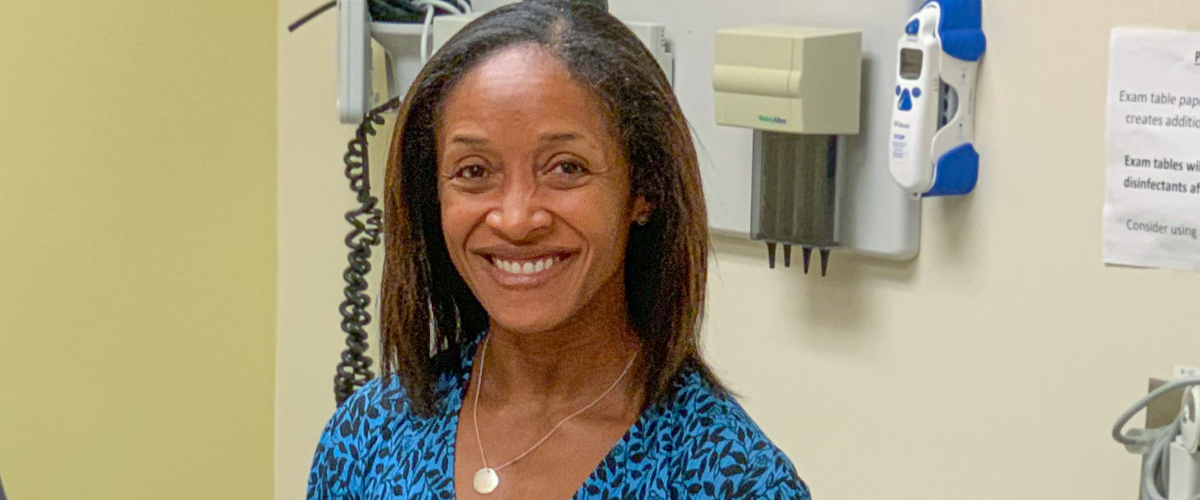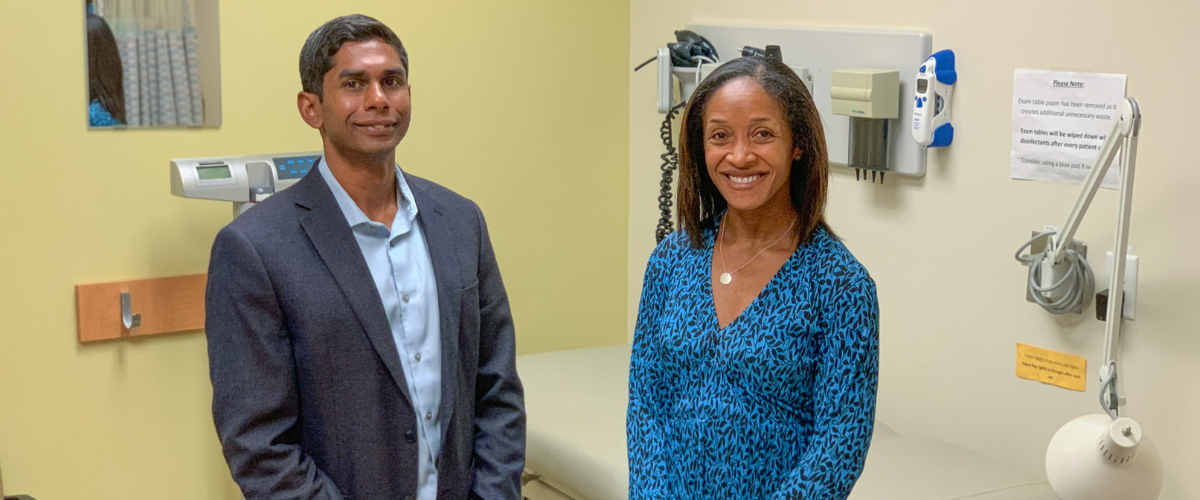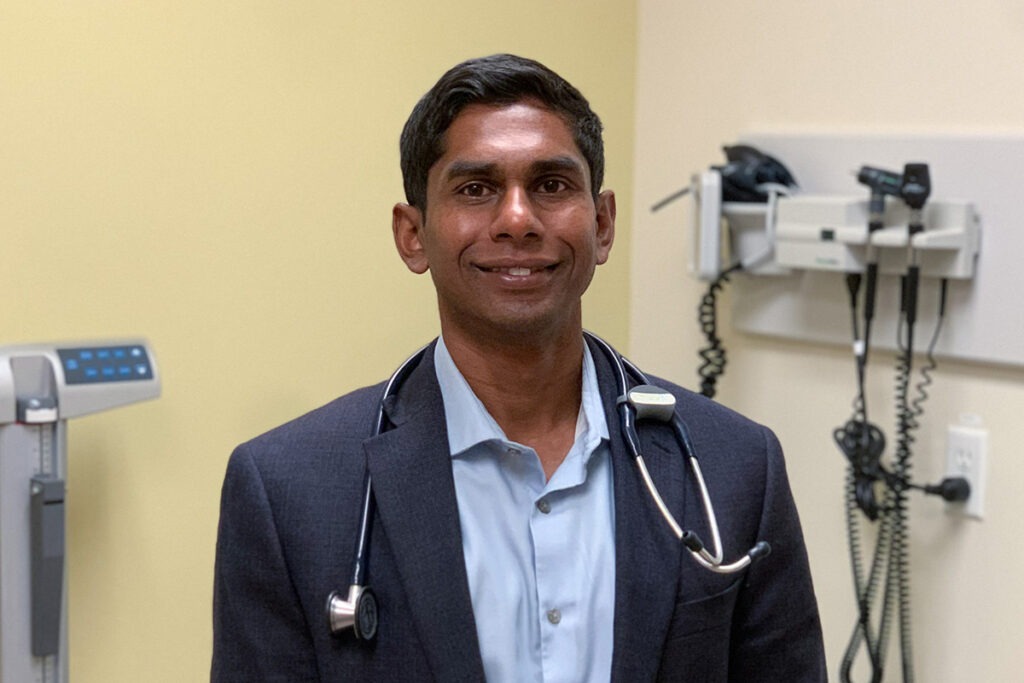Dr. Aisha Lofters spoke to CBC about how at-home HPV testing could significantly boost early detection. This is one of the recommendations in a recent CMAJ guideline on equitable preventative care which she co-authored.
Month: September 2023
A comprehensive new set of guidelines is being released to promote health equity in Canada
Dr. Nav Persaud spoke to The Globe and Mail about the new set of recommendations published in CMAJ designed to improve health care for people who face barriers in accessing it; as well as the new online tool that individuals can use to find out if they should speak to health care providers about prioritized screening.
Publication de nouvelles lignes directrices exhaustives pour la promotion de l’équité en matière de santé au Canada
Le Dr Nav Persaud a accordé un entretien au Globe and Mail au sujet des nouvelles recommandations publiées dans le Journal de l’Association médicale canadienne (JAMC) et qui sont destinées à améliorer les soins de santé pour les personnes qui rencontrent des obstacles pour y accéder. Il a également parlé du nouvel outil en ligne permettant de savoir si une personne doit s’adresser à un prestataire de soins de santé pour obtenir un dépistage prioritaire.
How can we increase health equity in Canada? St. Michael’s researcher releases comprehensive guidelines
From Unity Health Toronto, by Marlene Leung
A new comprehensive national guideline outlines 16 preventive care recommendations to promote health equity for people experiencing disadvantages due to racism, sexism and other forms of discrimination.
The guideline, published in the Canadian Medical Association Journal, includes recommendations for increased screening for certain cancers and heart conditions, blood testing for tuberculosis (TB), and patient self-testing for diseases like HIV and HPV. These preventive care measures are intended to detect a medical condition or disease before it progresses to a more serious stage.
Some of the key recommendations in the study include:
- Prioritizing colorectal cancer screening for patients aged 45-74
- Offering HPV self-testing for people eligible for cervical cancer screening
- Screening for TB infection in people with other risk factors, including recent immigration to Canada from a country with high rates of TB
- Screening for depression and providing appropriate support to adolescents and adults
- Screening for risk factors for poverty in all families with children, and connecting families in need with resources and supports
- Connecting patients to primary care with automatic enrollment in a primary care practice
- Removing costs and barriers for medical tests, treatments and counselling
While preventive care is already part of our health system, many people experiencing marginalization face barriers accessing this care, says Dr. Navindra Persaud, study-co-lead and Unity Health Toronto family physician and Canada Research Chair in Health Justice.
“We’re hoping people will pay more attention to the actual specific actions that can be taken to promote health equity,” he said. “Even though inequities are rooted in systemic issues, there are things that healthcare institutions and healthcare providers can do on a day-to-day basis to achieve fairness when it comes to health outcomes.”
Persaud said while the recommendations are aimed at achieving fairness and equity in health outcomes, many of these recommendations will also improve efficiencies.
For example, the common method of screening for HPV and cervical cancer is via Pap tests that are conducted by a physician during a doctor’s appointment. During the appointment, the physician collects a sample from the patient and sends it to the lab. The results are sent back to the physician, who then communicates the results back to the patient.
By offering patients the option of self-testing and sending their sample to a lab, the process is made easier for patients who may not be able to come in to clinic. It can also address disparities in who gets cervical cancer screening, said Persaud.
“It’s an example that demonstrates that when we focus on health equity, we can actually improve the system in ways that benefit everyone,” he said.
Streamlining the process for TB testing via a single blood test, rather than a multi-step skin test, will also improve efficiencies, he added.
Persaud notes these preventive measures are already available to patients, it’s just a matter of redeploying resources and focusing on groups that have been underserved.
“The resources are already there, but there are people who are not receiving these life-saving interventions,” he said. “It’s really about using what we already have more appropriately and more fairly.”
A Patient’s Prescription for Our Sick Primary Health-Care System
A panel of patients in British Columbia recommended more support for team-based care in community health centres and improved electronic medical records among ways to improve primary health care in the province.
“This is a unique opportunity we’ve had to hear from patients,” said Goldis Mitra, the B.C. lead for the OurCare project.
“I was heartened to see how thoughtful, passionate and brave all of these citizens were,” added Mitra, who is also a North Vancouver family physician, teaches at the University of British Columbia and is on the executive of the group BC Family Doctors that represents the profession. “As someone who does work in primary care policy I think it’s really helped me orient my focus to the key issues we really need to be tackling in the province.”
There were 31 randomly selected British Columbians, roughly matching the province’s demographics, who participated on the OurCare B.C. Priorities Panel. They spent some 30 hours together last spring hearing from speakers and discussing ways to make the system better.
The panel was part of a national process to engage Canadians on the future of primary care. Similar panels have been or will be convened in Ontario, Quebec, Nova Scotia and Manitoba. An earlier phase in the project surveyed some 9,000 people across the country.
Funders of the project, led by Toronto family physician and academic Tara Kiran, include Health Canada, the Max Bell Foundation and Even the Odds, a partnership between retailer Staples and the MAP Centre for Urban Health Solutions.
The B.C. panel’s 25 recommendations are included in a 75-page report released this week.
Patient-led report calls for primary care reform in B.C.
From the Vancouver Island Free Daily
A new report calling for primary care reform in B.C. is written by the exact group most impacted by the province’s health-care crisis: patients.
Last spring, a national initiative known as OurCare randomly selected 31 British Columbians from a pool of interested volunteers to share their experiences, spend 30 hours learning from experts and, ultimately, produce a set of 25 recommendations for change. Those calls to action were released on Tuesday (Sept. 19).
“It feels like there’s a massive failing within the government of just mismanagement in general,” one of the patient panelists, 30-year-old Malika Lim, told Black Press Media.
MAP scientists pitch cutting edge research at Angels Den 2023
Canada’s biggest medical research competition, Angels Den, is back – returning in-person, at Meridian Hall, for its 9th year. On October 11, 2023, six teams of St. Michael’s Hospital’s top scientists will pitch their groundbreaking research projects to judges and jurors for a chance at $500,000 in funding.
Amongst the contestants are MAP scientists Dr. Sean Rourke, Dr. Aaron Orkin, and Dr. Carolyn Snider. Watch their videos below to learn about the projects that they will be pitching.
Ontario Community Health Profiles Partnership (OCHPP) and Ontario Health, Central Region Announce 194 New Local Areas!
The Ontario Community Health Profiles Partnership (OCHPP) and Ontario Health, Central Region (OH) are very excited to announce the creation of 194 new local areas in Central Region!
Central is one of six new Ontario Health Regions established from the previous 14 Local Health Integration Networks (LHINs). OH Central is comprised of four former LHINs: Central, Central West, Mississauga Halton and North Simcoe Muskoka.
Creating 194 Local Areas
The OCHPP team, located at MAP Centre for Urban Health Solutions under the leadership of Rick Glazier, PI, and OH team have been working hard over the last year to develop local areas for the vast area covered by OH Central Region. The new 194 local areas comprise over four million people who reside in the fast-growing and diverse communities from Mississauga to Huntsville and Orangeville to Markham. (As a note, some jurisdictions refer to small areas as neighbourhoods but OH refers to theirs as local areas.)
Why Local Areas?
Local-level data can tell you a lot about the characteristics of a community, what shapes health care utilization, and where the biggest opportunities exist for improving health. In most regions, health and social data are available at a national, provincial, and municipal level to inform planning. However, it’s easy for the needs of local communities to get ‘averaged out’ when planners do not have access to local-area data. Neighbouring communities can have drastically different pictures of health and well-being, despite their close physical proximity. These differences are only visible in the data when we are able to break down the information and look at each local area separately.
The Process
The OCHPP and OH teams used an array of spatial reference and census data when developing local areas. Geographical information system (GIS) tools and methods were used to process data and ultimately define the new areas. Specifically, standard Census geographies were used as the building blocks for the new areas. Using a standard approach often makes analyzing and reporting data more accessible and efficient. In several instances, the team tweaked boundaries in order to ensure equal distribution of populations. An understanding of local communities, the use of existing local areas along with natural and constructed boundaries also informed the process.
The process also involved the testing and validation of populations within areas. We created our areas with population sizes that range from a minimum of 7,000 to a maximum of 30,000 people so that health outcomes would be reportable thus reducing the risk that cells with low counts would prohibit release of data due to privacy restrictions. Other factors included sufficient population size to allow for stratification by age group and sex as well as considering the stability of data over time and ability to account for changes in population dynamics within an area.
Important consideration was given to ensuring that areas identified as First Nations or Indigenous communities would not have their data reflected in the outcomes without their permission, owing to the lack of partnership agreements in place with these communities and to respect the principles of OCAP. These areas are identified in the local areas but no data will be reported.
Especially important is the northern reach of these local areas. Health system planning is crucially important to places that might historically and currently have difficulty accessing healthcare. By reporting health and socio-demographics at these small areas, planners will have additional tools to demonstrate gaps in care within their jurisdictions.
OCHPP: Partners and Public Website
Perhaps the best part of this collaboration is that all of the local area data (and any accompanying) maps will be available to anyone via the OCHPP website.
OCHPP partners include provincial and local governments, public health professionals, community health providers and researchers. We work together to build community capacity to use health information. One way we do this is by providing local area health and socio-demographic data in easy to use tables and maps on a freely-accessible website.
OCHPP partners contribute in many different ways but all share a common goal of using data to help inform and implement policies that reduce health inequities in Ontario.
We look forward to continuing to populate and add data for Ontario Health Central Region over the next year and beyond. See the Ontario Health Central Region page and local area data here: https://www.ontariohealthprofiles.ca
This project is one more step in the OCHPP goal of “mapping Ontario one small area at a time.” We are honoured to have worked closely with OH Central on this important and equity-based project.
For more information or to find out about methods used to create the new areas please contact: healthprofiles@smh.ca
Accidental drug and alcohol-related deaths nearly doubled in Ontario during pandemic
A new report from The Ontario Drug Policy Research Network and Public Health Ontario shows the number of accidental drug and alcohol toxicity-related deaths grew to alarmingly high levels in Ontario during the COVID-19 pandemic.
There were almost 9,000 accidental deaths from substance-related toxicities in the province from 2018-2021 – reaching an unprecedented rate that was five times higher than the number of deaths due to motor vehicle collisions in Ontario.
The report found that the annual number of substance toxicity deaths nearly doubled in Ontario during this time, reaching nearly 3,000 deaths in 2021, with an average of eight deaths occurring every day that year.
“This report shows the extent to which substance-related harms have worsened during the pandemic,” says senior author Dr. Tara Gomes, a scientist at the Li Ka Shing Knowledge Institute of St. Michael’s Hospital and ICES, and a principal investigator of the ODPRN.
“During the pandemic, for the first time, the number of deaths involving multiple substances surpassed deaths from one substance alone, highlighting the increasing complexity of this issue and the types of responses required to prevent these avoidable harms.”
Pendant la pandémie, les décès accidentels liés à l’alcool et aux drogues ont presque doublé en Ontario
Un nouveau rapport du Ontario Drug Policy Research Network et de Santé publique Ontario révèle que le nombre de décès accidentels liés à la toxicité des drogues et de l’alcool a atteint des niveaux alarmants en Ontario pendant la pandémie de COVID-19.
Près de 9 000 décès accidentels dus aux effets toxiques liés aux substances ont été enregistrés dans la province entre 2018 et 2021, atteignant un taux sans précédent de cinq fois supérieur au nombre de décès dus à des collisions de véhicules à moteur en Ontario.
Le rapport indique que le nombre annuel de décès dus à la toxicité des substances a presque doublé en Ontario au cours de cette période, atteignant près de 3 000 en 2021, soit une moyenne de huit décès par jour cette année-là.
New medical program dedicated to producing family doctors amid shortage
Amid an ever-widening family doctor shortage, an Ontario university is hoping to start turning the tide with a dedicated program – but some experts say that to fix the problem in the long run, we may need to reimagine our health-care system completely.
This month, first-year medical students are beginning their training to become family doctors – part of a brand new, innovative program taking aim at the critical shortage of general practitioners.
Though urgently needed, fewer and fewer med school graduates choose family practice.
This at a time when 6.5 million Canadians now have no access to primary care, and the country is expected to be short 30,000 family doctors by 2028.
“It means that for those people, really, the front door to the health-care system is closed,” Dr. Tara Kiran, a family doctor and researcher at St. Michael’s Hospital, told CTV National News. “And so they’re left without anywhere to turn if they get sick, but also even to keep them well, manage their chronic conditions. They don’t have the care that they need.”
When it comes to Toronto’s supervised injection sites, who’s in charge? Here’s what you need to know
A Toronto supervised consumption site has been in the spotlight after an employee was charged in connection with a fatal daytime shooting near the centre in July, spurring a provincial government review of all sites in the province.
But when it comes to who’s responsible for the sites, the answer is complex.
The federal, provincial and municipal governments are all part of a system of approvals, funding and oversight that allow the sites to operate. According to Toronto Public Health, there are 10 sites in the city and six of them — including the South Riverdale Community Health Centre (SRCHC) — are provincially funded consumption treatment services. Among the sites that are not provincially designated consumption treatment service locations, one is not open to the public, one is Toronto Public Health’s and another relies on donations.
People in the community around the SRCHC have pointed to increasing concerns in the past year on safety and cleanliness in the area. As a not-for-profit, the site says the more funding it dedicates to security, less gets spent on providing care for clients. Meanwhile, the city councillor for the area hopes the province will provide more funding to help offset that cost.
Supervised consumption sites do provide multiple benefits, says Dr. Ahmed Bayoumi, a physician and researcher at St. Micheal’s Hospital in Toronto. Bayoumi was part of a team that was tasked with looking at whether the cities of Toronto and Ottawa would benefit from the implementation of supervised injection facilities.
“There is research showing that people who use supervised consumption sites have lower rates of overdose and lower rates of fatal overdose than people who don’t,” Bayoumi said. “The sites help to connect people to other services that are useful, both social services and health services, things like stable housing and employment.”










